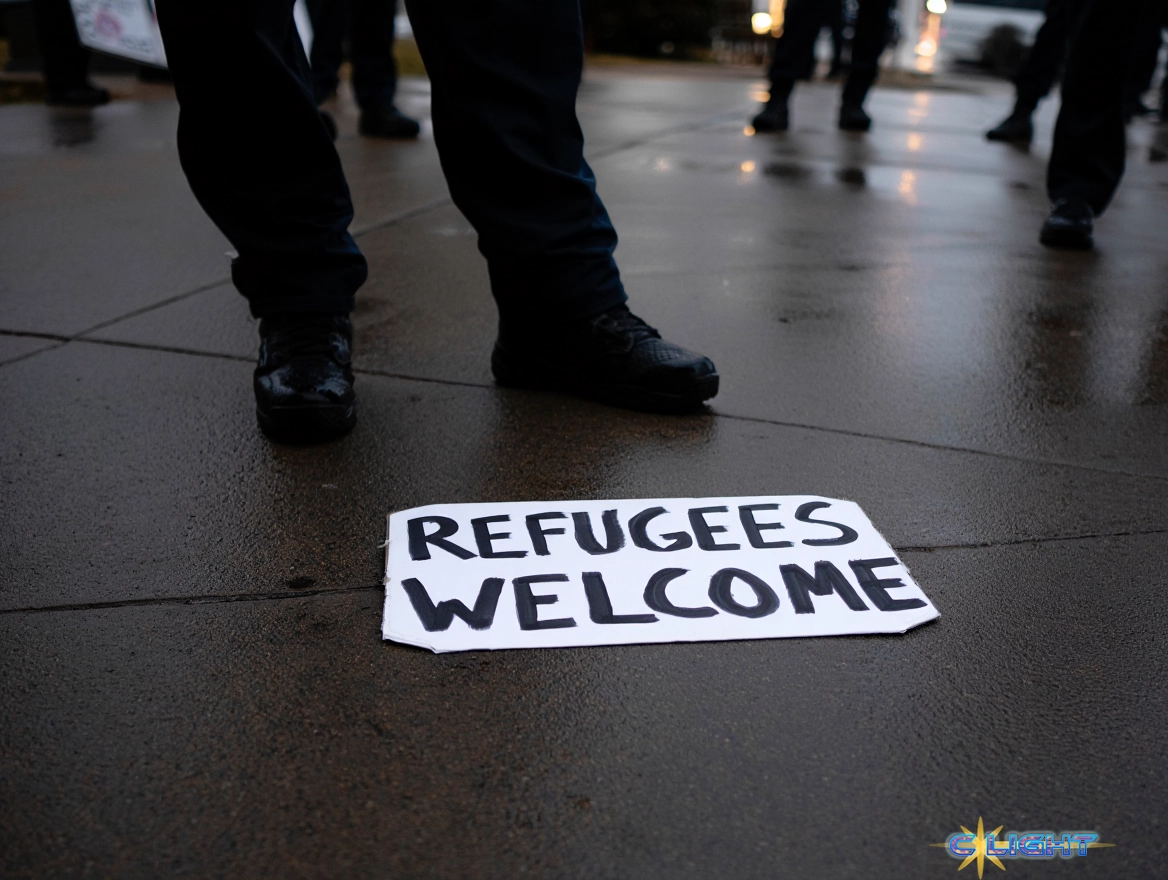4 minutes read time.
The air outside the nondescript brick building in Broadview, Illinois, was thick with tear gas and the shouts of protesters on Friday, but the scene was more than just another clash in America’s fraught immigration debate. It was a frontline battle in the Trump administration’s escalating war on so-called “sanctuary cities,” a conflict where federal agents in riot gear are now using chemical agents and physical force against American citizens, journalists, and even elected officials. The “Operation Midway Blitz” in Chicago has become a brutal case study in the administration’s attempt to impose its will on dissenting communities through fear and overwhelming force.
The operation, which acting ICE head Marcos Charles has declared will continue with “not an end date in sight,” has resulted in nearly 550 arrests across the Chicago area. But it has also galvanized a fierce resistance. Protesters have gathered daily outside the ICE processing facility in Broadview, a suburb west of Chicago, attempting to non-violently block vehicles and bear witness to the crackdown in their community.
On Friday, that resistance was met with a shocking display of force. Federal agents, masked and heavily armed, deployed teargas and fired pepper balls from the rooftop into a crowd of roughly 100 demonstrators. Kat Abughazaleh, a 26-year-old Democratic candidate for Congress, was thrown to the ground by an agent twice. Daniel Biss, the mayor of nearby Evanston and another congressional candidate, was also teargassed. “It was impossible to breathe, and really, really scary,” Biss said in a video statement. “They are trying to intimidate us… and we will not be intimidated.”
The Department of Homeland Security has painted a starkly different picture, framing the protesters as “violent rioters” who were “siding with vicious cartels, human traffickers, and violent criminals.” In a statement, DHS accused demonstrators of assaulting law enforcement and slashing tires, and a spokesperson dismissed the elected officials present as “desperate politicians” seeking “15 minutes of fame.” This narrative attempts to delegitimize any opposition to their operations, casting American citizens exercising their First Amendment rights as collaborators with the very “narco-terrorists” the administration has vowed to destroy.
Local leaders, however, see the federal actions as a direct assault on their communities and democratic values. “The fact that DHS responded with tear gas and by throwing protesters on the pavement tells you everything you need to know,” said Illinois Lieutenant Governor Juliana Stratton. “This isn’t about safety. This is about fear, control, and the Trump administration’s attempt to intimidate Illinoisans into silence.” Toni Preckwinkle, president of the Cook County Board of Commissioners, described the federal tactics—using unmarked cars, refusing to identify themselves, and hiding their faces—as “terrorizing our communities.”
This conflict is not unique to Chicago. The sources document a growing pattern of confrontations and arrests of elected officials who have joined protests at ICE facilities across the country, from New York City to Newark. It is a sign of a deepening crisis, where local democratic governance is coming into direct conflict with a federal agency that increasingly operates like an occupying force.
The “Midway Blitz” is not a temporary surge; it is a preview of a massive, nationwide expansion of ICE’s power and presence. A separate Washington Post investigation reveals that the agency is moving with incredible speed to establish roughly 300 new office sites across the country to house more than 10,000 new deportation officers and lawyers. Fueled by a Congress that has tripled its enforcement budget to nearly $30 billion, ICE is on a hiring spree, lifting age caps and offering huge bonuses to bolster its ranks. Internal documents describe the effort as a “surge,” with one official stating the attitude is, “we want this yesterday.”

This rapid expansion is intended to create what UCLA law professor Hiroshi Motomura calls a “much broader, pervasive enforcement apparatus that’s going to be part of everyday contact between individuals and law enforcement.” He compares the scale of this expansion to some of the darkest chapters in American history, including Senator Joseph McCarthy’s anti-Communist investigations and the internment of Japanese Americans during World War II.
The battle in the streets of a Chicago suburb, therefore, is not just about a local raid. It is a desperate attempt by a community to push back against the construction of a vast, national deportation machine. It is a fight against an administration that views dissent as collusion and protest as a riot. As the federal government continues to pour billions into this new apparatus of control, the question for Chicago and for the nation is whether nonviolent resistance will be enough to stop it.
Discover more from Clight Morning Analysis
Subscribe to get the latest posts sent to your email.










